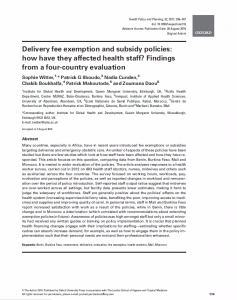
Despite recent progress, Sierra Leone’s lifetime risk of maternal death remains high (1 in 21), as does neonatal mortality (35 per 1000 live births). We present findings on maternal and neonatal care practices from a mixed methods study conducted in four districts during July–August 2012. We conducted a household cluster survey with data on maternal and newborn care practices collected from women ages 15–49 years who had ever given birth. We also conducted focus group discussions and in-depth interviews in two communities in each of the four districts. Participants included pregnant women, mothers of young children, older caregivers, fathers, community health volunteers, traditional birth attendants (TBAs) and health workers. We explored personal experiences and understandings of pregnancy, childbirth, the newborn period and social norms. Data analysis was conducted using STATA (quantitative) and thematic analysis using Dedoose software (qualitative). Antenatal care was high (84.2%, 95% CI: 82.0–86.3%), but not timely due to distance, transport, and social norms to delay care-seeking until a pregnancy is visible, particularly in the poorer districts of Kambia and Pujehun. Skilled delivery rates were lower (68.9%, 95% CI: 64.8–72.9%), particularly in Kambia and Tonkolili where TBAs are considered effective. Clean cord care, delaying first baths and immediate breastfeeding were inadequate across all districts. Timely postnatal checks were common among women with facility deliveries (94.1%, 95% CI: 91.9–96.6%) and their newborns (94.5%, 95% CI: 92.5–96.5%). Fewer women with home births received postnatal checks (53.6%, 95% CI: 46.2–61.3%) as did their newborns (75.8%, 95% CI: 68.9–82.8%). TBAs and practitioners are well-respected providers, and traditional beliefs impact many behaviours. Challenges remain with respect to maternal and neonatal health in Sierra Leone; these were likely exacerbated by service interruptions during the 2014–2016 Ebola Virus Disease epidemic. The reasons behind existing practices must be examined to identify appropriate strategies to improve maternal and newborn survival.